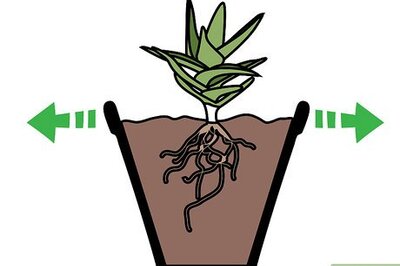
views
On a cold winter night of 1994, wrapped in three layers, I had watched the late-night show of Hum Aapke Hain Koun with my parents. The film had been running in theaters for a while at that time and at the behest of some friends, my parents had decided to take me to watch the film after being assured by one and all that it has 'child-friendly' content. Since watching films in theaters back then was almost like an annual event for me and those mostly were animation films, I was overjoyed by the fact that I was being taken to watch an actual Hindi film.
The film, which is now commonly known as a three-hour-long marriage video, had captured the imagination of cinegoers across generations. The family film catered to one all and changed the way we now perceive weddings in our society.
Sooraj Barjatya's film, featuring Madhuri Dixit and Salman Khan in the lead, documented the arranged marriages system in India and the concept of large extended families celebrating almost every occasion together under the sun. It also introduced so many north Indian customs to the rest of country which now have become an integral part of weddings across communities.
I remember attending a cousin's wedding in Kolkata a year after the film released and became a blockbuster. Being completely mesmerized by the film, I was quite convinced that the cousin's wedding would be an exact replica of the wedding that the film showed. There would mehendi, naach-gana, a flirtatious devar- just like the film. In reality, there was none.
Being the bride's younger sister I had insisted on wearing a white and a green lehenga- choli (yes, go on, judge me), which was of course immediately shot down by my mother who had promptly handed over a completely different outfit to me and said "you are not in a film." Oh well. But I did introduce my other Bengali cousins to the concept of 'joota chhupai'. Their reference point was that sequence from the film which had Salman and Madhuri dancing to 'Dulhe Ki Saaliyon'. I had hoped to have same sort of 'fun' at the wedding but was reminded by the stern older relatives that is in the 'north-indian caaltare'. We Bengalis don't do such 'uncivilized things'. Okay then.
Over the years, with each new member in the family getting married, our subdued Bengalis traditional weddings started adapting the aplomb that was depicted in the film. So now there is one day restricted to mehendi, one day for coordinated sangeet and of course the flirting and teasing of other girls and boys of marriageable age during the wedding. And it's not just my community but in other communities as well. No wedding is complete without one engagement ceremony, a sangeet and a grand reception nowadays.
While Sooraj Barjatya changed the wedding scene in India drastically with the film, it also cemented the position of actors Madhuri Dixit and Salman Khan in the superstar league. Madhuri went on to win a Filmfare award that year for her performance and subsequently became a huge star.
The film attained a cult status and paved way for similar family oriented films. The following year, Aditya Chopra's 'Dilwale Dulhania Le Jayenge' released which had a wedding playing an integral part of the story. In fact both the films in later years became a reference point for many filmmakers who attempted to make family dramas. Some did well, some failed but none could replicate the similar magic that these films had created.
(This article has been modified)




















Comments
0 comment